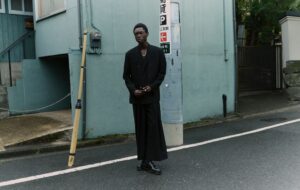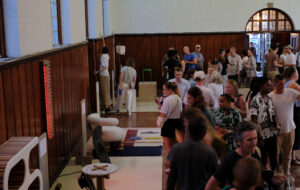
words Chris Hall
No one would ever suspect that I think objects have souls unless they saw me unthinkingly administering severe beatings to chair legs, bed corners and other objects that have “hurt” me. Roger-Pol Droit has made me feel bad – very bad indeed – about that. I’m going to stop doing it.
Someone came up to Droit at a party and asked him, “How are things?”, which got him to thinking, rather literally, about our relationship to everyday objects, and the “idiotic mantra” refused to stop revolving in his head. This book is his attempt to reconcile the idea of an object with the singularity of it: “At one extreme, to know only the Idea, as intended to encompass all realities. At the other extreme, to apprehend each individual reality, one after the other, at the risk of never being able to combine them into any whole.” So he decided to spend a year drawing nearer to objects – spying on them, as it were.
The result is poetic, beguiling, inspiring and totally eccentric – my copy is stamped in tramlines of approval, bafflement and wonder. It reads like a mash-up between Gaston Bachelard’s The Poetics of Space and Nicholson Baker’s The Mezzanine: “What is sympathetic about a paperclip? The ingenious bend? The smooth, light, metallic neatness? The temptation to contort and dismember it?” It’s not nearly as learned or self-referential as you might imagine from a philosopher. In fact the author has gone back to first principles in an attempt to penetrate the world of appearances.
He starts with the bowl, “one of the earliest, most primitive objects”, writing that, “Amid the universal flux, the receptacle intervenes and staunches the endless flow … It is not without reason that the monks of Buddha’s community got rid of everything except the begging bowl. It served them in a sense as a proxy house. For the bowl seems … quite devoid of threat.”
The Julian Opie-like objects trapped in thought bubbles on the cover portray them as platonic ideals, but How Are Things? is far more personal than that. They should have suffused the cover in cigarette smoke so much do these pages reek of late-night Gauloise.
Only a Frenchman could link, for example, a paperclip to bondage: “This little twist of metal … puts one in mind … of Eros. Not sexuality exactly, and much less orgasm … the power that binds without paralyzing.”
Even the passages where he’s at risk of sounding like a complete tosser (“I may in fact be the only person in the world … trying to fix his attention on the essence and existence of a fork”) are saved by his dry wit, gimlet eye and phrasing. On freezers, for example, he writes: “It has engendered more than a few monsters: cubes of soup, blocks of sauce, unbreakable juices, mincemeat stones.” However, he goes too far on rubber boots: “Whatever protects also imprisons, whatever comforts becomes murderous”. Wellies? Murderous?!
He’s brilliant on just why sunglasses are “the most stubbornly elitist of ordinary, everyday things”, and his observation that “You are aware of a gaze being trained upon you, but you are unable to look it in the eye” had me thinking of architectural analogues (Swiss Re always gives me the creeps) and how I was only ale paradoxically to overcome my shyness at having to dress up as a cowboy at a fancy-dress party by wearing mirrored shades, thus drawing more attention to myself.
And I wonder how recently Droit wrote the following paragraph, which perfectly encapsulates his modus operandi: “Let us place side by side, in thought only, a woman wearing a veil according to Islamic law and a nudist wearing sunglasses. In the former case all is concealed … only the eyes are offered to view. In the case of the nudist, only the eyes are shielded from the look of the other. Which of the two can be considered as the more effectively concealed? And why?” Absolutely fantastic.
How Are Things? A Philosophical Experiment by Roger-Pol Droit, is published by Faber and Faber, £7.99
www.faber.co.uk
















